|
Yesterday fat girls and drag queens from all over Southern California (and me) gathered in the fashion district for Domino Dollhouse's pop-up shop! There was much sweat, cupcakes and semi-nudity as we tried on printed dresses, studded chambray mini-vests, and sheer skirts! I went home with a knee-length sheer mint skirt with built-in slip, a black high-low skirt, and a yellow plaid dress with a black peter pan collar and black buttons. Oh, and a beaded mini-fez from Sweet Leigh (www.sweetly.etsy.com). This blog was edited from the original version on 9/28/12, 4:15pm.
NB: I got some fantastic feedback from two people related to this blog, and I want to thank them for taking the time to write and also for their ideas about how to make this blog/my ideas engage even more critically with systems of oppression! As a writer I find the process of feedback so important, and I don't always get a second pair of eyes before publishing. Some minor edits have been made to the original post, but the premise/thesis of this piece has not changed. Lady Gaga’s recent response to being called “meaty” is one in a relatively long line of (indisputably) thin women spouting the rhetoric of body revolution while being deeply involved in the machine that churns out impossibly arbitrary beauty standards. Yes, Gaga, I give you props for putting yourself and your body out there because I realize it likely felt vulnerable. But really? It’s taken you this long to realize that these standards exist and that they affect you too? Women all over the United States affirm and reaffirm body standards through a kind of confessional process, referred to in popular culture and by some fat/gender studies scholars as "fat talk." A confession might begin with something like "I hate my thighs!," followed by a reciprocal outpouring/confession meant to bond us women in our mutual, dogged pursuit of the "perfect" body. In the book Fat Talk, MiMi Nichter notes: "The statement 'I'm so fat' is actually much more than an observation about how a girl looks or feels. It is a call for support from her peers." Another emanation of fat talk is a meme with which we are all familiar: “You look like you’ve gained a little weight,” often followed quickly by “You look great no matter what!” This confusing criticism-comfort model is part of this long-time feminine pastime. Women engage in this kind of conversation publicly and privately: What did you eat? How much fat does that have? Did you lose weight?! It’s what scholars have deemed a “uniquely feminine” conversation tendency. Sometimes we’re expected to offer tough love and other times we know that a dose of unconditional adulation is what’s called for. The outpouring of earnest replies from fans fits perfectly with this conversation pattern. The thin Lady Gaga has been called fat and engages with this by launching the "Body Revolution" campaign. In so doing she begins the chain of reactions women have been taught, from our baby days, to enact. Her fans comfort her. Her fans resonate with her and the campaign, but will this campaign be the fix to our feminine body woes - or even the start of a new conversation? My bet’s on no. It doesn’t engage with women and our bodies in a fundamentally different way. The conversation – and the way it’s playing out – follows all the trappings of fat talk and makes this body revolution a lot more like high school mirror talk redux. Because “fat talk” isn’t about change. It’s about reaffirming body policing. It’s about keeping the conversation fundamentally about our focus on the female body and not on liberation ― and certainly not on revolution. This Body Revolution campaign is not a new idea. Upper class women have found the concept of system overhaul titillating for centuries. Furthermore, the campaign's phraseology borrows from fat positive ideology that's been around for several decades. Lady Gaga’s show of near-nudity becomes an invitation to commiserate and comfort; remind her that she does, in fact, have an “enviably” thin body. We become her best friends in that moment, engaging in the ritual that feels familiar. Her exposed body becomes a thing that we are supposed to pity and envy. We play out the roles; we derive pleasure from playing out the roles, and once everyone is suitably fulfilled and reassured we go back to counting calories. I’m a firm believer in the politics of size. Hell, I’m a fat activist. And if we were at a different point in the history of fat, women, feminism, whatever, I think it would be obvious that the the Body Revolution campaign is a problematic attempt. But we’re not at a different point. We’re still at this one: where fat is considered an act of personal failure, where women bear the moral brunt for body “aberrance,” where women are mostly just bodies to be approved and gawked at or loved or loathed depending on the camera angle or the Instagramonomics, and where we all live in fear of that one little word: F.A.T. Gaga’s campaign is not a method to unravel an oppressive, obsessive system of body rules that has us reeling. It’s the same old ethics misleadingly packaged in body-positive language. When perusing my program for the NOLOSE Conference, I was struck by the number of workshops devoted to "keyword: fat + health." I wasn't the only one who noticed. Another conference-goer mentioned in a conversation that she felt there were two main tracks at the conference: one committed to health and the other committed to issues related to anti-racism/people of color organizing. This observation felt like cause for pause.
My ongoing ambivalence about the discussion of health in the fat movement was further complicated by attending a workshop entitled "Reclaiming/Reframing Fat Bodies: Is Health a Moral Imperative?" I spent the better part of the weekend having conversations and thinking about this question. Through those internal and external dialogues I was able to articulate some of my feelings around the language of health in the context of fat activism. "Healthy" as an Identity As a person who's fascinated by identity, I found myself asking: "Why are some fatties so strongly invested in an identity like 'healthy'?" Let me back-peddle momentarily and say that this post is not about why fatties are concerned about health. We are in the midst of an increasingly vociferous War on Obesity. We are constantly expected to defend our health. We are less likely to seek medical care because of the compounded (1) lack of affordable/accessible healthcare and (2) fatphobia that is a codified part of medical practice. Fatties have varying degrees of interface with the medical system, have different health needs, have different experiences around dis/ability. I'm not interrogating that. What I'm interrogating is the prevalence of the healthy+fat narrative. What I'm interrogating is Healthy as an identity. I personally do not identify nor do I feel drawn to identifying as "healthy." On the one hand, this is pretty typical. When we're talking about identity, it's pretty typical that a person in privilege doesn't feel drawn to an identity related to that privilege - because they're not constantly forced to think about and experience this thing. For instance, once I was asked by a trans-identified researcher, "what does it mean to you to be a woman?" I was stymied. I didn't really have anything to say. I didn't have a highly salient/strongly-felt identity around being a woman because - as a cisgendered woman - there was little question - from friends or society - about my status as a woman. Related to the matter of health, a person who does not require ongoing medical care - a person like me, right now - is less likely to have a highly salient health-related identity. On the other hand, because I am a woman and a person of color and a fat person, my body (and bodies like mine) has been subject to medical and social discourse and scrutiny for quite some time. Disabled, female and people of color bodies have been pathologized for centuries. So, in some ways I feel I have been precluded or disqualified from the title "healthy," and so it's not even a desire I can locate. Once a person holds an identity they are likelier to flag an identity or "perform" that identity. A fatty invested in identifying as "healthy" may be more likely to "perform" healthy. They may be more likely to talk about the "healthy" way they prepare foods or the abundance of "healthy" practices in their daily lives. In this way, the dominant discourse around health is reproduced in a community of people who have been stigmatized and dehumanized by that very discourse. The Politics of Respectability In a conversation at NOLOSE, a friend introduced me to Higgenbotham's critique. The politics of respectability are deeply concerned with being palatable to the very forces and institutions that seek to entrap us in the discourse of conservatism - which is about just that: conserving. It is a project concerned with morality, with (false) binaries, with "who belongs" and "who deserves." It is a project that has historically left people of color, poor/working class people, queer people, disabled people, trans people and even fat people behind. And I see the centering of the language of health/healthy in the fat movement as a threat to the future of our radicalism because it creates a culture of compliance in which there is an acceptable way to be fat and an unacceptable way. We cannot discuss health in fat community in a cultural vacuum. When we talk about health at NOLOSE, for instance, we cannot ignore that we are in Oakland (home to a historically Black, working class population, where there are neighborhoods that have only liquor stores and no grocery stores), California (one of the biggest economies in the world, home to some of the wealthiest cities in the US), United States (where there is a firmly entrenched, WASP-centered idea of what health means and looks like). There is a pre-existing discourse around health that has a history mired in racism, sexism, and ableism. There is incredible cultural impetus to be "healthy" and "health" is framed in the United States as a personal/individual responsibility rather than a federal one. So, when we bring a discourse of health into fat community it already has preexisting capital and meaning; it already has the weight of social mores on its side. The message is familiar and so it's easier - and perhaps more alluring - to adopt. Me & the Art of Failure In another amazing conversation with a fellow theory nerd at NOLOSE, a (new) friend and I began discussing the politics of failure. I think being deemed a cultural failure is not only hot but also subversive. I had posted the following thought on my Facebook page: Social systems are most vulnerable at their margins: so sayeth Judith Butler. To be fat is to experience the freedom that marginality - failure - gives me: the freedom from the tyranny of straight life, freedom from the suffocation of externally determined success, freedom to push the envelope, the conversation, to hike up my skirt, to see the futility of apology, to sweat and love and fuck the way that rebels do. My friend said our conversation reminded her of J. Halberstam's newest book, The Queer Art of Failure. She observed that the idea of/obsession with health or "long life" is reminiscent of ideas of futurity and reproduction (in the baby-having sense). When I think about my life as a fatty, I find myself drawn to publicly consuming high fat foods, to showing cleavage, to having too much sex and too much fun. Maybe because I'm overly macabre, I don't imagine myself being 70 and telling stories to grandchildren. I don't see myself as part of the project of success or health or being a good American or being a good girl. And that doesn't make me feel sad. It makes me feel like a superstar. The rhetoric of health doesn't resonate with me, and there are lots of reasons why. I have no grand conclusions or admonitions. I don't want to point fingers or shame people. These thoughts are just my offerings to a growing movement at a crossroads. Alicia and Kori at the September 1 Picnic & Swap at Dolores Park in San Francisco. Outfits styled from clothing brought to the swap.
Fatty clothing swaps are revolutionary. They are revolutionary because they subvert the expectation that we not gather - because when fat-bodied people gather we are more visible. They are revolutionary because they challenge capitalism. They are places where we pool the resources we have and share them. And then we celebrate that sharing. They are revolutionary because they undermine traditional gendered ways of relating. The culture of clothing swaps encourages the exchange of "girl, you werked that!" and "that looks so good on you!" They are revolutionary because they refuse to accept that we, as fatties, ought to wear only muted colors in conservative cuts. Fatty clothing swaps take the frownies upside downies and take fashions' lemons and turn them into lemonade spritzers with a cran twist. That's why I love fatty clothing swaps. That's why if you've been thinking of hosting one you really ought to! Last weekend Kori Bias of Buxom Vintage and I decided to coordinate and create a plus-size clothing swap + picnic at the very tail-end of summer at Dolores Park in San Francisco. I would say I'm a bit of a veteran of the swap, having been to a little under ten of them myself. There's often food (hummus, wine, and cupcakes seem to be swap favs). There's always chisme. And there's plenty of love. But I had never really organized one. So, when Kori messaged me about Sep 1, I was all over it. I thought I'd make a quick how-to guide for the newbies who are considering doing it, but aren't sure about the ins'n'outs. Prep Work 1. Your Vision Now, the vision portion is where most people begin and end (when it comes to swaps, careers, relationships, adventurous outfit choices). They get scared (what if no one comes?!). They get overwhelmed (what if 80 people show up?). They get mired in unnecessarily high expectations (I need boys in gold lame hot pants passing around smoked salmon mousse and capers on mini-toast or I'll diiiiiiiie! Trust me: I've so been there). That's what I'm here for: to remind you that you can make this swap happen! When you imagine the swap you want to have, is it mostly friends or mostly people you don't know well yet? Is it at your house or at a park? Is there food? Once you figure out what your swap looks like, figure out what you need: mirrors? somewhere people can change outfits (some people will be more likely to want to change in private than others; so a place like a bathroom can be great, but the most recent swap I did was at a park, obviously, and people didn't mind trying on clothes over their outfits or their leggings/chemises)? ice? food? If the list starts getting long, ask yourself if you can live with doing a little less. The answer is almost always: Yes! Do not abort the mission! Virgie's Vision Swap Rule: 99% of what you need for the swap you must already own or have access to. The most low-maintenance/novice-friendly swap might involve your/a friend's place, some empty floor space, and the Dirty Dancing soundtrack. I highly recommend for the first-time swap organizer, that you commit to a low-maintenance swap, plan to offer 1 or 2 simple snacks, with an expected turnout of 5-10 people. 2. The Date & The Time Figure out when you want to do it and set the date and time. Whether you feel you need 6 months or 6 days, figure out what works for you (the organizer/s) and those who may be attending. If most of the people you're inviting are long-term planners, you may need to give them a 1-2 months heads-up. If they're last-minute people, you may need only a couple weeks. Weekends are often the best, but people who want to show up will show up on a weekday evening. I don't recommend early mornings, but any time between 11am and 9pm are prime swapping times. Virgie's Date Rule: I don't recommend giving less than two weeks or more than 2 months notice for a swap. Virgie's Time Rule: Always expect that most people will show up an hour late. 3. The Venue My #1 choice for a novice swapper is your place or a friend's place. Choose a venue that works for you, your vision and that's as easy as possible. You can hold a swap outdoors in a park, for example, if you live in a place with clement weather, but make sure to advise guests (in the invite) to wear things like leggings and tank tops under their clothes so they can easily try things on while getting close to a true-fit and not having to get nekkid in public. Virgie's Venue Rule: Steer clear of venues you have to pay for or that require strict reservation times. 4. Invites The invite is where you share the details from steps 1-3. Excellent things to include are: (1) time (start time and end time), (2) location, (3) whether there's going to be food and how much of it/what kind you want your guests to bring, (4) how private or public the venue is (back to Step #3), (5) if you definitely do NOT want certain items (like shoes, which are heavy and don't move as easily or quickly as clothing, but that can be amazing if you or your guests love shoes), (6) what the accessibility sitch at your venue is (could your venue accommodate someone with a disability or an 80 pound bag of clothes? If you live in a 5th floor walk-up/have any stairs, for example, this is important info for your guests and you can figure out how to make things work before the day of). Make a Facebook page for the event, send out emails, write a blog or a tumblr post and feel free to ask friends to promote it mindfully (you don't want Mike from the bar showing up... unless you do want Mike from the bar showing up) on their page/feed if you want to meet new friends. Virgie's Invites Rule: If you're inviting a lot of people who aren't close friends, however many people RSVP, divide that by 2 and then multiply that number by 0.7 and you'll roughly have your number of attendees. Do not panic if the number is low! The Day Of 5. Keep it Simple Do not under any circumstances panic! If you said you were providing snacks, then prep them. If you have extra mirrors to bring out do that. Most of the fatties I know aren't into sitting on the floor (I know I'm not), so if you have some extra seating or pillows to sit on those are great. Make sure you have some garbage bags or grocery bags for the leftovers post-swap. Put out your swap offering if you want. Turn on some music. Get a glass of wine. 6. So everyone is an hour late. Girl, don't stress. We already knew this was going to happen and it is absolutely no reflection on you, how much people love you, or how they feel about the swap. I have been to swaps where a bunch of serious swappers (such as: me) show up as early as possible to get first dibs. At our swap, Kori didn't want any actual swapping to happen until 1 (the event started at 11) so that folks could get a chance to settle in, talk and we could accommodate late-comers. Though I'd never seen it done before, I liked the outcome! You get to decide how that plays out. 7. Swap! As the hostess you get to decide how the swapping works, but mostly I've found that people organically gravitate to pieces that suit their style and there's enough to go around. If people don't take what you brought, then don't fret! If your guests are shy, get into that pile and start pulling pieces that might work for individual guests. Encourage people to try stuff on and give encouraging feedback. It's tres infectious. 8. Clean-up The etiquette around the leftovers seems to be that the host/ess and/or people who have a car take all or half the leftovers - once they're bagged up - to the local thrift store. 9. Bask in your Fabulosity You have officially joined the annals of hostess history. |
Virgie Tovar
Virgie Tovar, MA is one of the nation's leading experts and lecturers on fat discrimination and body image. She is the founder of Babecamp (a 4 week online course focused on helping people break up with diet culture) and the editor of Hot & Heavy: Fierce Fat Girls on Life, Love and Fashion (Seal Press, 2012). She writes about the intersections of size, identity, sexuality and politics. See more updates on Facebook. Archives
April 2021
Categories
All
|

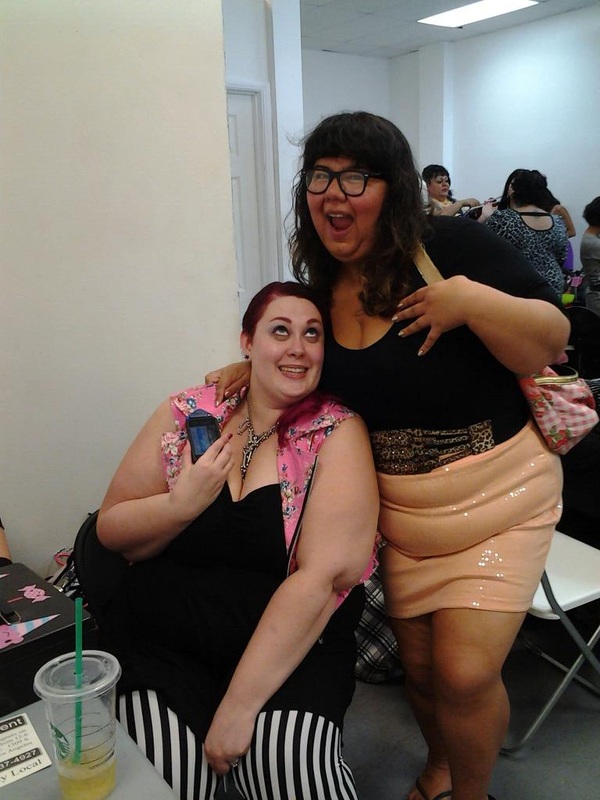

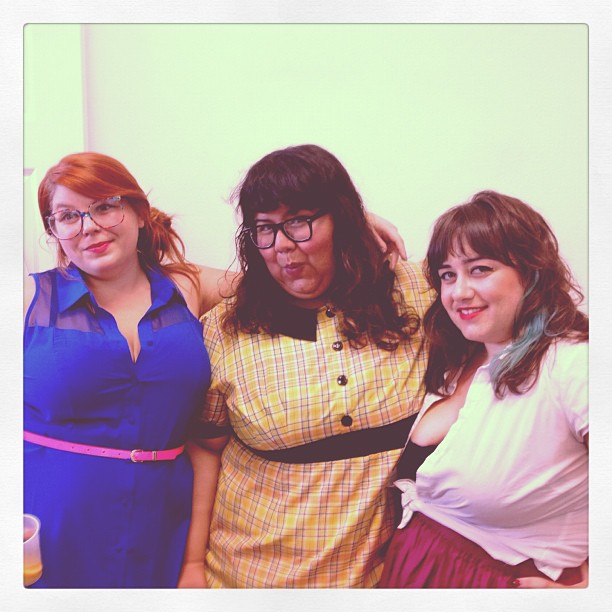
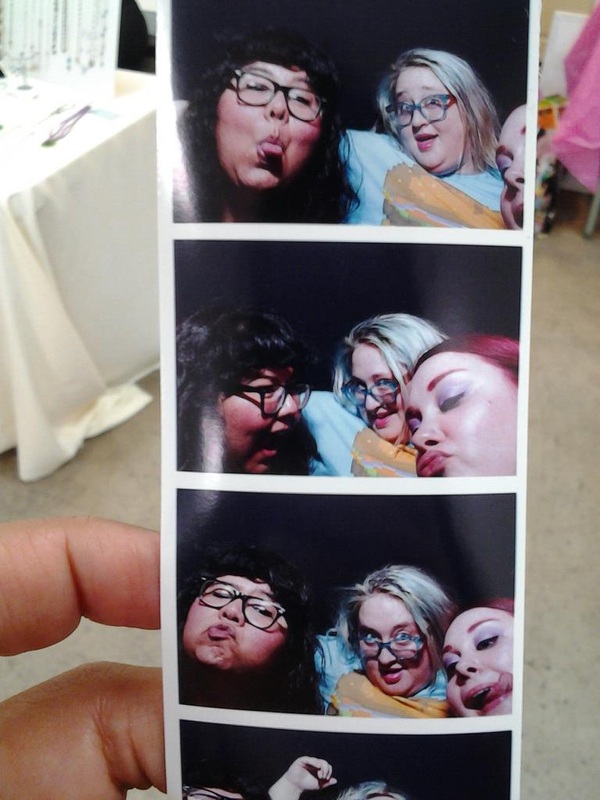
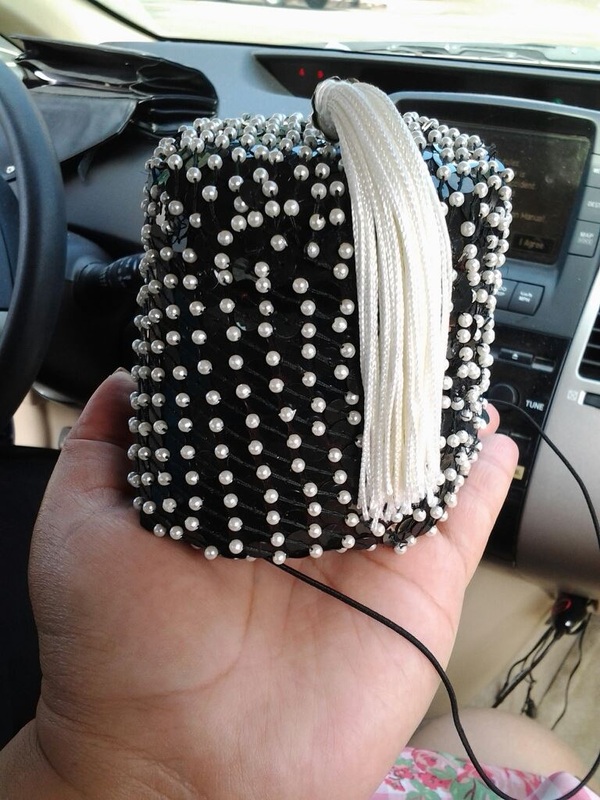
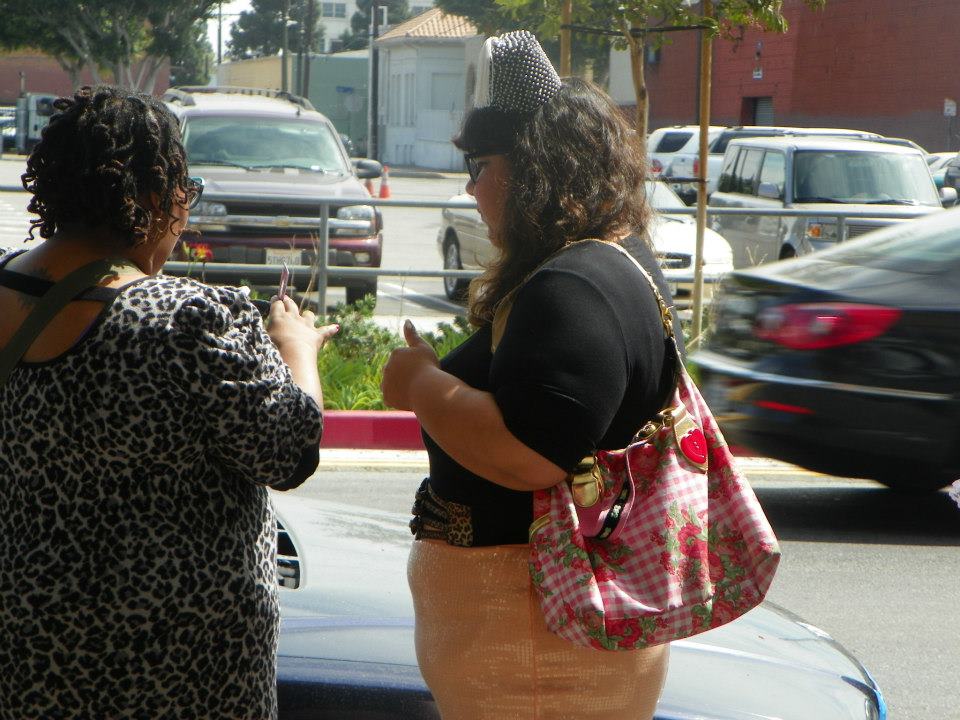
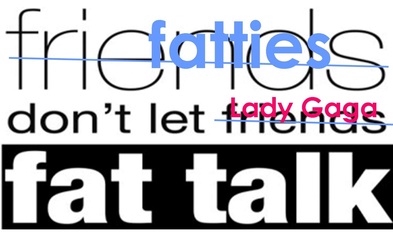





 RSS Feed
RSS Feed